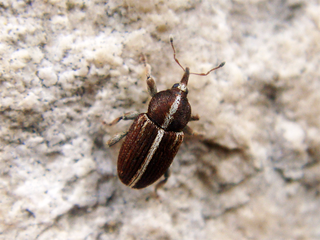
The beetle subfamily Curculioninae is part of the weevil family Curculionidae. It contains over 23,500 described species in 2,200 genera, and is therefore the largest weevil subfamily. Given that the beetle order (Coleoptera) contains about one-quarter of all known organisms, the Curculioninae represent one of the – if not the – most successful radiations of terrestrial Metazoa.
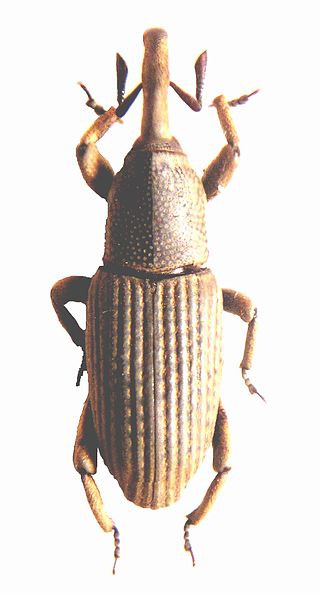
The insect tribe Stromboscerini is part of the weevil family Curculionidae, subfamily Dryophthorinae. It is a small and little-known weevil group. Alonso-Zarazaga & Lyal (1999) treated it as a subfamily.

Gonipterini is a tribe of weevils in the subfamily Curculioninae.
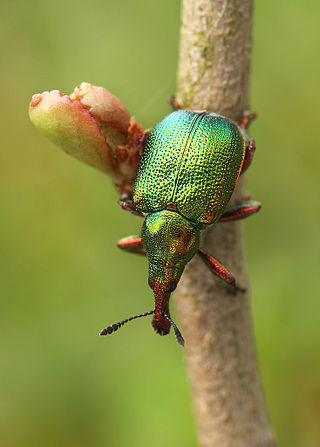
The tooth-nosed snout weevils, Rhynchitidae, are small beetles that are usually found in vegetation. They usually use buds, fruits, or seeds for oviposition. The tooth-nosed snout weevils receive this name due to the teeth on the edges of their mandibles.

The Entiminae are a large subfamily in the weevil family Curculionidae, containing most of the short-nosed weevils, including such genera as Entimus, Otiorhynchus, Phyllobius, Sitona, and Pachyrrhynchus. In comparison with their stunning diversity, only a few of these weevils are notorious pests of major economic importance. Entimines are commonly encountered in the field, including urban environments, and abundant in entomological collections.
Cratopodini is a weevil tribe in the subfamily Entiminae.

Polydrusini is a weevil tribe in the subfamily Entiminae.
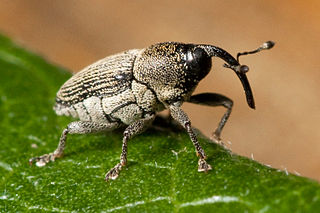
Apostasimerini is a tribe of flower weevils in the family of beetles known as Curculionidae. There are over 240 genera and nearly 1700 described species in Apostasimerini.
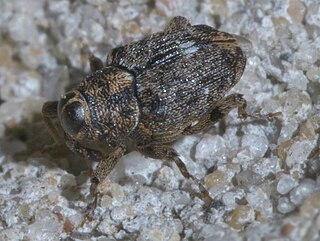
Conoderinae is a subfamily of true weevils in the beetle family Curculionidae. There are more than 210 genera in 15 tribes, and about 2,400 described species in Conoderinae.

Mecinini is a tribe of true weevils in the family of beetles known as Curculionidae. There are at least three genera and about eight described species in Mecinini.

Tychiini is a tribe of leguminous seed weevils in the family of beetles known as Curculionidae. There are about 5 genera and at least 30 described species in Tychiini.

Platystomini is a tribe of fungus weevils in the beetle family Anthribidae. There are 4 genera and over 100 described species in North America, and many others worldwide.

Derelomini is a tribe of true weevils in the family of beetles known as Curculionidae. There are about five genera and eight described species in Derelomini.
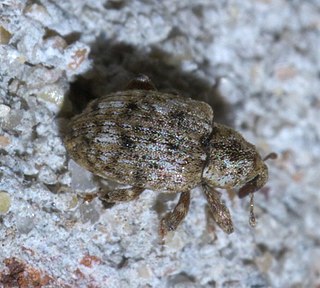
Conotrachelini is a tribe of true weevils in the family of beetles known as Curculionidae. There are about 7 genera and at least 50 described species in Conotrachelini.

Platyrhinini is a tribe of fungus weevils in the beetle family Anthribidae. There are at least 3 genera and more than 40 described species in Platyrhinini.
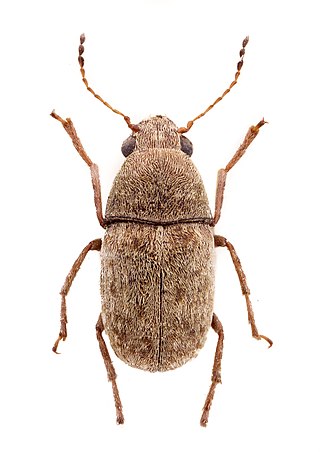
Choraginae is a subfamily of fungus weevils in the beetle family Anthribidae. There are about 9 genera and more than 180 described species in Choraginae.
Orthognathini is a tribe of true weevils in the family of beetles known as Curculionidae.
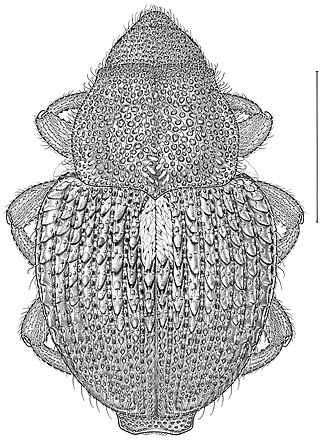
Scleropterini is a tribe of minute seed weevils in the family of beetles known as Curculionidae. There are at least eight genera in Scleropterini.
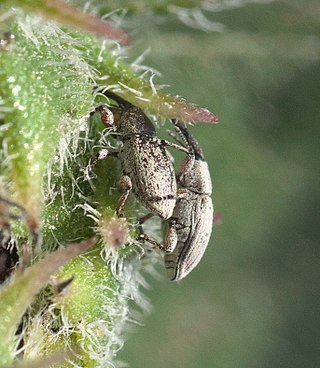
Smicronychini is a tribe of true weevils in the family of beetles known as Curculionidae. There are at least 7 genera in Smicronychini.
Othippiini is a tribe of true weevils in the beetle family Curculionidae. Of the eight genera in Othippiini, only Egiona and Othippia are not monotypic. Acoptus suturalis is the only species of the tribe found in the New World.


















